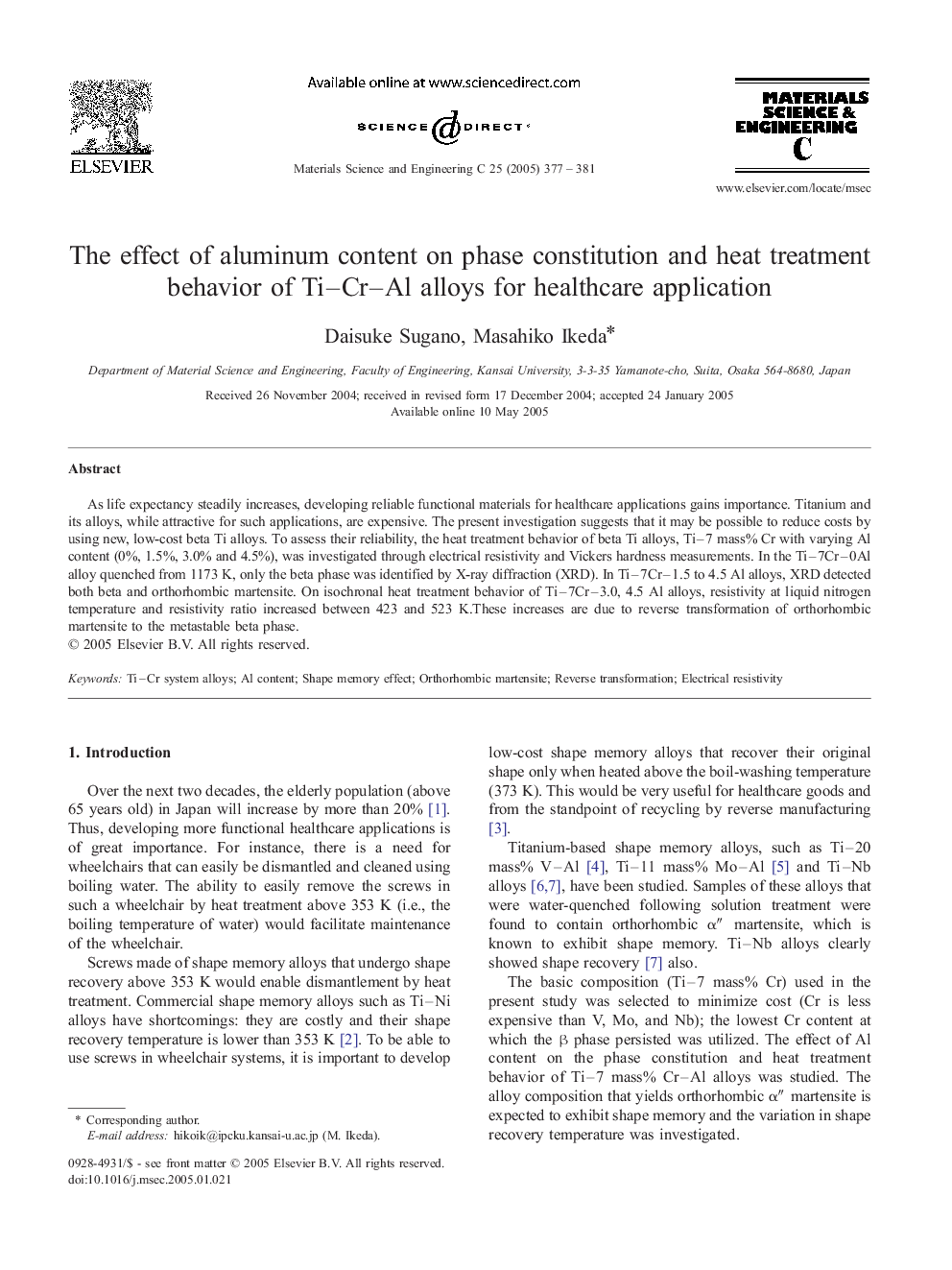| Article ID | Journal | Published Year | Pages | File Type |
|---|---|---|---|---|
| 10615137 | Materials Science and Engineering: C | 2005 | 5 Pages |
Abstract
As life expectancy steadily increases, developing reliable functional materials for healthcare applications gains importance. Titanium and its alloys, while attractive for such applications, are expensive. The present investigation suggests that it may be possible to reduce costs by using new, low-cost beta Ti alloys. To assess their reliability, the heat treatment behavior of beta Ti alloys, Ti-7 mass% Cr with varying Al content (0%, 1.5%, 3.0% and 4.5%), was investigated through electrical resistivity and Vickers hardness measurements. In the Ti-7Cr-0Al alloy quenched from 1173 K, only the beta phase was identified by X-ray diffraction (XRD). In Ti-7Cr-1.5 to 4.5 Al alloys, XRD detected both beta and orthorhombic martensite. On isochronal heat treatment behavior of Ti-7Cr-3.0, 4.5 Al alloys, resistivity at liquid nitrogen temperature and resistivity ratio increased between 423 and 523 K.These increases are due to reverse transformation of orthorhombic martensite to the metastable beta phase.
Related Topics
Physical Sciences and Engineering
Materials Science
Biomaterials
Authors
Daisuke Sugano, Masahiko Ikeda,
